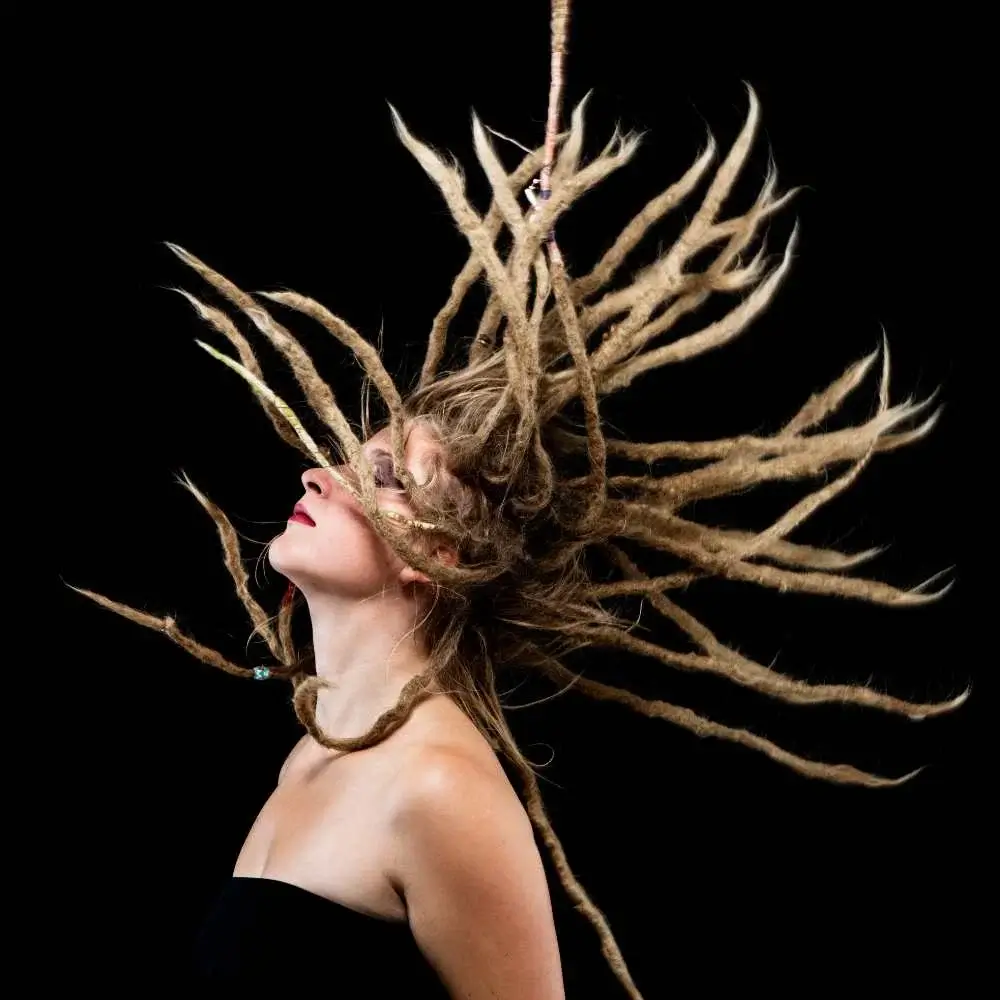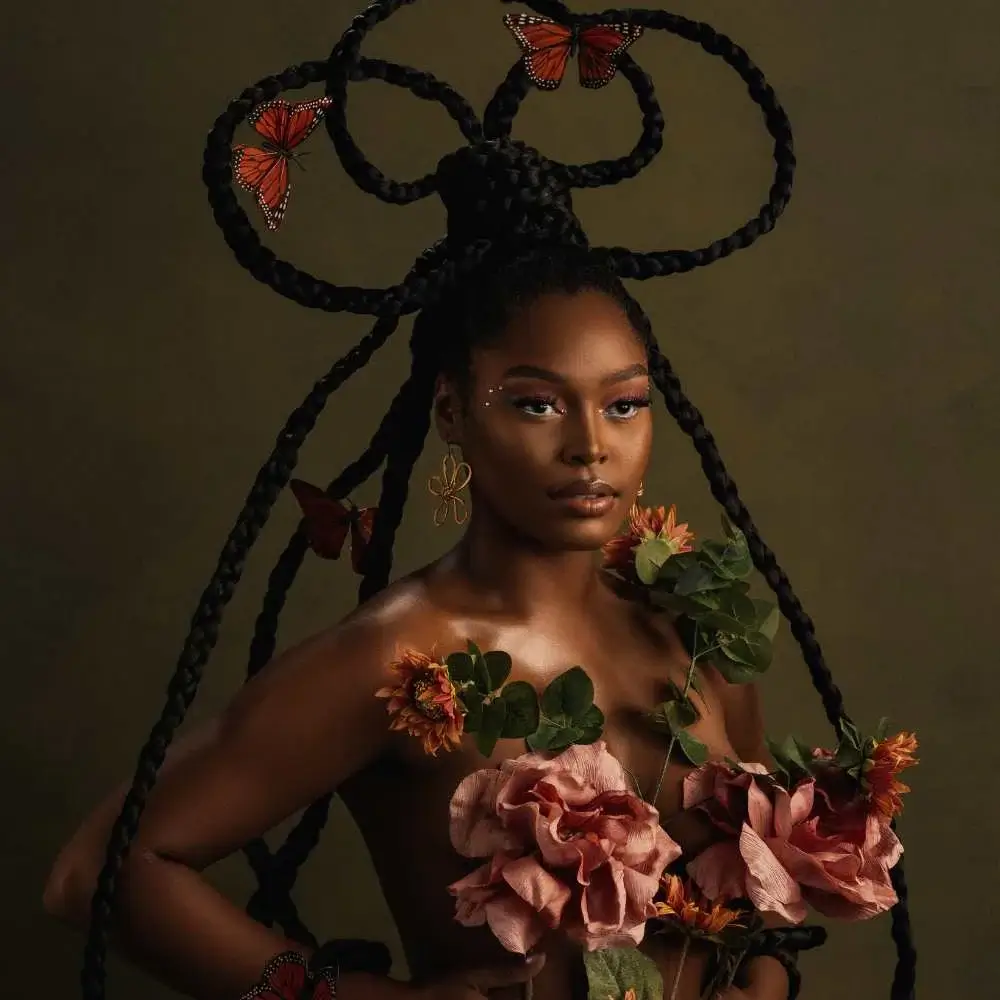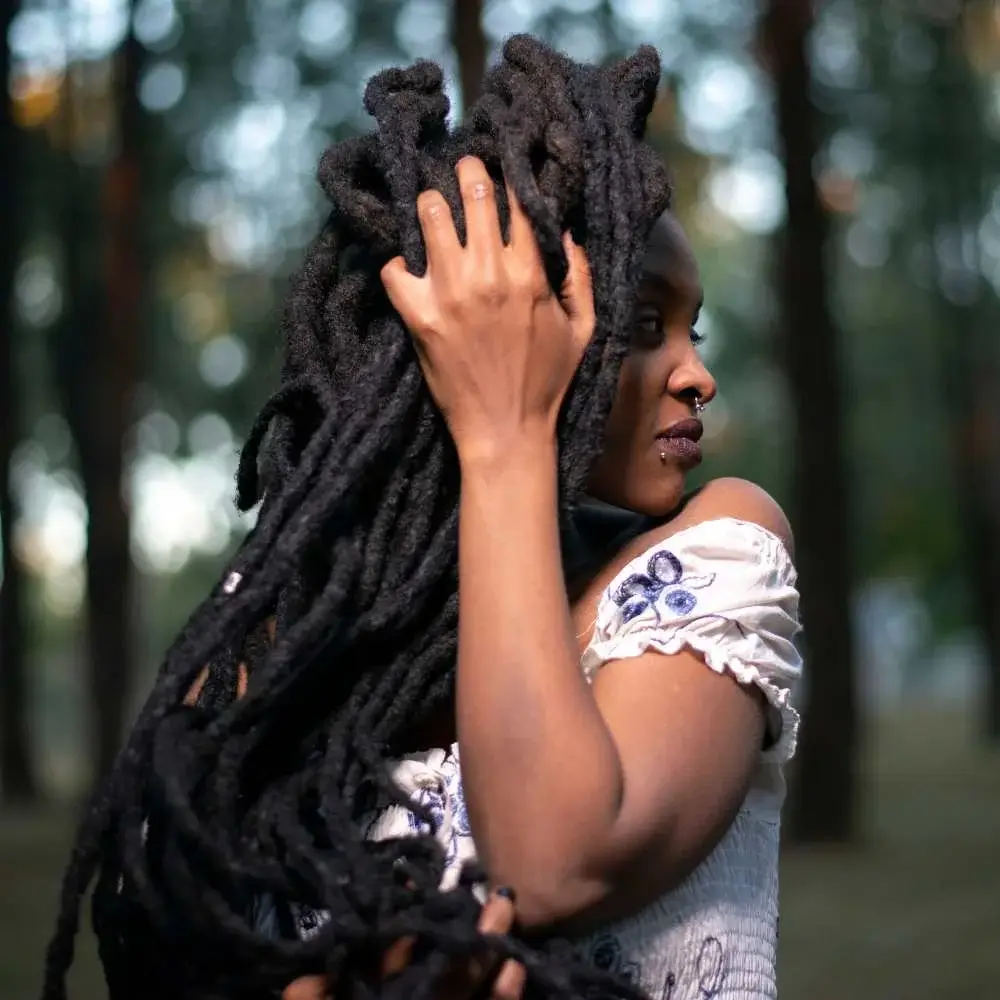Create dreadlocks: a hairstyle that's equal parts mystique, rebellion, and artistic expression. If you've ever found yourself staring at someone sporting a head full of glorious dreads, wondering how on earth they achieved such a gravity-defying feat, you're in the right place! In this article, we'll unravel the tangled mysteries behind creating dreadlocks, making it as simple as a twist and a tug.
But wait! Before you start turning your tresses into a masterpiece, let's dive into some dreadlock-related anecdotes and relatable themes that will have you chuckling and nodding your head in agreement. From the trials and tribulations of maintenance to the unexpected camaraderie with fellow dreadheads, we'll cover it all – leaving you well-prepared for your own dreadlock journey.
So, whether you're considering dreads as a bold fashion statement or as an ode to your free-spirited nature, keep reading to discover the secrets, the laughs, and the joys of creating and rocking those envy-inducing dreadlocks!

Choosing the Right Method to Create Dreadlocks
When you decide to create dreadlocks for the first time, it's essential to choose the right method that suits your hair type, lifestyle, and personal preferences. There are several techniques to create dreadlocks, each with its advantages and drawbacks. In this article, we will discuss some of the most popular methods in detail, along with real-life examples and storytelling to help you make an informed decision.
Twisting and Palm Rolling Technique
The twisting and palm rolling technique is an excellent way to create dreadlocks for those with curly or coily hair types. This method involves sectioning the hair and twisting it using a gel or wax to hold the shape. After twisting, you'll use your palms to roll each section, which helps to compress and tighten the dreadlocks.
Backcombing and Crochet Hooking Method
Backcombing and crochet hooking is another popular method to create dreadlocks, particularly for those with straight or wavy hair. This technique involves separating the hair into sections, backcombing each part to create a matted texture, and then using a crochet hook to pull loose strands back into the dreadlock.
Interlocking Method
The interlocking method is another option to create dreadlocks for those who want a low-maintenance and long-lasting style. This technique involves using a tool called a latch hook to loop the hair through itself, creating tight, interlocked dreadlocks. It's suitable for all hair types and requires less maintenance compared to other methods.
Choosing the right method to create dreadlocks depends on your hair type, personal preferences, and lifestyle. By understanding the different techniques available, you can confidently embark on your journey to create dreadlocks that reflect your unique personality and style.

Preparing Your Hair to Create Dreadlocks
Before you create dreadlocks, it's essential to prepare your hair properly to ensure a smooth and successful process. In this article, we'll discuss the crucial steps you need to take before starting your dreadlock journey, along with real-life examples and storytelling to make the information engaging and easy to understand.
Washing and Conditioning Your Hair
The first step in preparing your hair to create dreadlocks is to wash and condition it thoroughly. Clean, residue-free hair will lock better and prevent any build-up or unpleasant odors.
Drying Your Hair Completely
After washing and conditioning, it's crucial to dry your hair completely before creating dreadlocks. Damp hair can lead to mildew growth and unpleasant smells within the dreadlocks.
Detangling and Brushing Your Hair
Before you can create dreadlocks, you must detangle and brush your hair thoroughly. Removing any knots or tangles will make the process easier and help the dreadlocks form more evenly.
Choosing the Right Products
Selecting the right products to create dreadlocks is essential for a successful outcome. Depending on the method you choose, you may need a few different items, such as a residue-free shampoo, a light conditioner, a comb, a crochet hook, or a locking gel.
Preparing your hair to create dreadlocks is a vital step in the process. By following these guidelines, you'll be well on your way to achieving the dreadlock style you've always wanted. Remember, the key to success is patience, dedication, and proper hair care.

Step-by-Step Guide on How to Create Dreadlocks
Hey there, fellow dreadlock admirer! If you're anything like me, you've been gazing at those mesmerizing dreadlocks from a distance, daydreaming about rocking them yourself, right? Guess what? Your dream is about to come true! In this super-fun blog post, I'll spill the beans on how to create dreadlocks for the very first time. Pinky promise, it's way easier than it seems! So, buckle up and get ready to transform your hair game with some fabulous dreadlocks!
Preparing your hair for dreadlocks
Alright, folks! The first step to create those fabulous dreadlocks is all about prepping your lovely locks. It's time to give your hair a good ol' scrub-a-dub-dub and get rid of any sneaky products that might mess with the dreadlock-making process. Here's a pro tip: give your hair a thorough shampoo and deep conditioning sesh a few days before the big day. Oh, and don't forget – make sure your hair is bone dry before moving on to the next exciting step.
Sectioning your hair for dreadlocks
With your hair all squeaky clean and dry, it's time for some sectioning action! You're gonna divide your hair into cute little subsections. Remember, the tinier the subsection, the slimmer your dreadlock will be. I'm a fan of using teeny-weeny rubber bands to section off my hair, but hey, you can totally use clips or whatever floats your boat! Let's get those sections ready for some dreadlock magic!
Creating the actual dreadlocks
Alrighty, now for the most thrilling part: creating those actual dreadlocks! There are a bunch of methods to do this, but I'll spill the tea on one of the most popular ones: backcombing. To rock the backcomb technique, grab a small section of hair and brush it backward towards your scalp with a fine-toothed comb. Once you're done, give that section a little clockwise twisty-twist until it forms a cool coil. Now just rinse and repeat with the rest of your hair, and voilà – you're officially a dreadlock superstar!
Ta-da! Your Step-by-Step Guide to Dreadlock Awesomeness! And there you have it, folks - your very own step-by-step guide to create dreadlocks for the first time! I hope this handy-dandy tutorial helps you feel like a total boss, ready to rock this one-of-a-kind hairstyle. Got questions or comments? No worries! Just drop 'em down below, and we'll chat. Catch you later!
Oh, and before you go, are you on the hunt for the dreamiest shampoo to pamper your brand-new dreadlocks? Look no further than this link! This fabulous guide has got you covered with all the different shampoo types perfect for keeping those gorgeous dreads in tip-top shape. Whether you need an anti-frizz hero or a moisture-rich miracle worker, these options will make your dreads silky, strong, and oh-so-healthy. So, what are you waiting for? Click that link and start exploring right now! Your dream shampoo is just a few clicks away!

Maintaining and Tightening Your Dreadlocks
Once you create dreadlocks, it's essential to maintain and tighten them regularly to keep them looking neat and well-groomed. In this article, we'll discuss some tips and tricks for maintaining and tightening your dreadlocks, along with real-life examples and storytelling to make the information engaging and easy to understand.
Regular Palm Rolling
Palm rolling is a simple yet effective technique to help tighten and maintain your dreadlocks. By gently rolling each dreadlock between your palms, you can compress and shape the hair, keeping it neat and well-formed.
Root Maintenance
Taking care of the roots is crucial when maintaining and tightening dreadlocks. As your hair grows, new growth at the roots will need to be incorporated into the dreadlocks. You can use a crochet hook or your fingers to pull loose hairs back into the dreadlock, ensuring a neat appearance.
Washing and Drying
Keeping your dreadlocks clean is vital for their overall health and appearance. Wash your hair with a residue-free shampoo every one to two weeks, depending on your personal preference and hair type. It's essential to dry your dreadlocks thoroughly after washing to prevent mold or mildew growth.
Regular Trimming
Trimming your dreadlocks occasionally can help maintain a tidy appearance and remove any damaged or frayed ends. Use sharp scissors to trim the tips of your dreadlocks, being careful not to cut too much at once.
Maintaining and tightening your dreadlocks is essential for keeping them looking their best. By following these tips and incorporating them into your routine, you can enjoy beautiful, well-maintained dreadlocks that reflect your unique style and personality.

Common Mistakes to Avoid When Creating Dreadlocks
As you embark on your journey to create dreadlocks, it's essential to be aware of common mistakes that could hinder your progress or damage your hair. In this article, we'll discuss some of the typical pitfalls and how to avoid them, using real-life examples and storytelling to make the information engaging and easy to understand.
Using the Wrong Hair Products
One common mistake when creating dreadlocks is using the wrong hair products. Heavy conditioners, oils, and silicon-based products can cause build-up in your dreadlocks, making them difficult to maintain and potentially leading to unpleasant odors.
Neglecting Proper Maintenance
Another mistake to avoid when creating dreadlocks is neglecting proper maintenance. Failing to palm roll, maintain roots, or wash and dry your dreadlocks correctly can result in loose, unkempt dreadlocks that may require significant effort to fix.
Starting with Too Short Hair
Attempting to create dreadlocks with hair that is too short can be frustrating and lead to poor results. Ideally, your hair should be at least 6 inches long before starting the process, as this allows for better locking and easier maintenance.
Rushing the Process
Creating dreadlocks is a time-consuming process that requires patience and dedication. Rushing through the process or expecting instant results can lead to disappointment and poorly formed dreadlocks.
Being aware of common mistakes when creating dreadlocks can help you avoid potential issues and ensure a successful outcome. By taking your time, using the right products, and following proper maintenance techniques, you can create stunning dreadlocks that showcase your unique style and personality.

In conclusion, the decision to create dreadlocks is a significant and rewarding commitment that can transform your appearance and showcase your unique personality. By choosing the right method, preparing your hair, maintaining and tightening your dreadlocks, and avoiding common mistakes, you can enjoy a stunning and well-maintained hairstyle that reflects your individual style.
Throughout this article, we've used real-life examples and storytelling to highlight essential aspects of creating and maintaining dreadlocks. Remember that patience, dedication, and proper hair care are crucial factors in achieving the desired outcome.
As you embark on your dreadlock journey, keep these tips in mind and embrace the process. With time and effort, you'll be able to create beautiful, healthy dreadlocks that you can be proud of for years to come.

FAQs on Creating Dreadlocks
How to get dreadlocks naturally?
The secret to creating dreadlocks without any fancy tools or techniques is called the "neglect" or "freeform" method. Yup, you heard that right! All you gotta do is let your hair do its own thing—no combing, no brushing, just pure hair freedom! Over time, your locks will start to tangle and knot together, forming au naturel dreadlocks. It's like Mother Nature's very own hairstyling magic! Just remember to keep your hair clean and separate any massive clumps that might form. Voilà! Enjoy your naturally fabulous dreadlocks, you free-spirited soul!
How are hair locs made?
Hair locs, or dreadlocks, are crafted by encouraging your hair to tangle and mat together into rope-like strands. There are several nifty methods to make this happen, like backcombing, twist and rip, or even going au naturel with the freeform method. The key is to section your hair into small parts and then use your chosen technique to create those lovely locs. Remember, patience is a virtue when it comes to dreadlock-making, so sit back, relax, and let the transformation unfold! Soon enough, you'll be rocking those gorgeous hair locs like a true trendsetter!
Can all hair get dreads?
All hair types can totally get dreads! That's right, whether you've got straight, wavy, curly, or coily locks, there's a seat for everyone at the dreadlock fiesta. Different hair textures might need different methods to create those fabulous locs, but rest assured, there's a dreadlock style out there for everyone. So, no matter what kind of hair you're rockin', you can dive right into the world of dreads and flaunt those unique, head-turning tresses. Let's get this dreadlock celebration started!
How long do dreads last?
With proper care and maintenance, those lovely locs of yours can last for years—even decades! Yup, you heard that right! It's essential to keep your dreads clean, moisturized, and well-maintained to ensure they stay strong, healthy, and looking oh-so-fine. So, if you're ready to rock the dreadlock life, buckle up for an exciting, head-turning journey that could last longer than your favorite TV series! Dreadlock party, anyone?
Can you wash dreadlocks?
Absolutely, positively, yes! In fact, keeping your dreads squeaky clean is super important for maintaining their health and gorgeousness. Just make sure to use a residue-free shampoo that's gentle on your locs, and give 'em a good scrub-a-dub-dub every couple of weeks or so, depending on your hair type and lifestyle. Oh, and don't forget to squeeze out excess water and let your dreads dry thoroughly after each wash – nobody likes a damp, musty dreadlock party! So, go ahead, pamper those dreads with some refreshing H2O, and keep them looking fresh and fabulous!
Do dreadlocks damage?
When done and maintained correctly, dreadlocks can be a healthy, happy hairstyle for your tresses. However, if you're not careful with the process or neglect your locs, they could potentially cause damage. So, here's the deal: make sure to use gentle techniques when creating your dreads, keep them clean and well-maintained, and avoid putting too much tension on your scalp. Follow these golden rules, and you'll be rockin' those damage-free, fabulous dreads in no time! Just remember, your hair is your crowning glory, so treat it with love, care, and plenty of TLC!
Read our article about best curl activator for your hair type here!
How to do dreads
Creating dreadlocks involves a process that encourages the hair to mat and tangle into individual rope-like strands. There are several methods to start dreads, and the best one for you will depend on your hair type, length, and personal preferences. Here are some popular methods for starting dreads:
Twist and Rip method: Suitable for straight to wavy hair types.
- Start with clean, dry hair.
- Section your hair into squares (the size of the squares will determine the thickness of your dreads).
- Take a section of hair and twist it gently.
- Split the twisted section into two and pull the strands apart.
- Bring the strands back together and repeat the process until you reach the end of the hair.
- Secure the end with a small rubber band.
Backcombing method: Suitable for most hair types.
- Start with clean, dry hair.
- Section your hair into squares.
- Hold a section of hair taut and use a fine-tooth comb or a dread comb to tease the hair towards the roots.
- Continue backcombing until the section forms a matted, tangled dread.
- Roll the dread between your palms to help it take shape and secure the end with a rubber band.
Two-strand twist method: Suitable for curly to kinky hair types.
- Start with clean, damp hair.
- Section your hair into squares.
- Apply a light hold gel or cream to a section of hair.
- Split the section into two equal strands.
- Twist the strands together from the root to the tip.
- Secure the end with a rubber band or let it coil naturally.
Coil method (Finger coils): Suitable for curly to kinky hair types.
- Start with clean, damp hair.
- Section your hair into squares.
- Apply a light hold gel or cream to a section of hair.
- Use your finger or a small comb to twist the hair in a clockwise or counterclockwise direction until it forms a tight coil.
- Repeat the process for all sections of hair.
Neglect method (Freeform dreads): Suitable for curly to kinky hair types.
- Start with clean, dry hair.
- Allow your hair to grow and tangle naturally, without combing or brushing.
- Separate your hair into sections by gently pulling apart the tangles as they form.
- Over time, your hair will naturally form into dreadlocks.
Once you've started your dreads using one of these methods, it's essential to maintain them properly. Regularly wash your hair with a residue-free shampoo and separate any conjoined dreads by gently pulling them apart at the roots. Some methods may require palm rolling or retwisting to keep the dreads neat and well-formed.
Remember, dreadlocks can take several months to fully mature, so patience is key. It's also a good idea to consult a professional loctician for advice and guidance, especially if you're unsure about the best method for your hair type.
How long does it take for dreads to lock?
The time it takes for dreadlocks to fully lock depends on various factors, including hair type, texture, length, dreadlock method, and maintenance routine. In general, it can take anywhere from a few months to over a year for dreadlocks to mature and lock completely. Here's a general overview of how long it might take for different hair types:
- Straight or wavy hair: This hair type typically takes the longest to lock, often requiring 6 months to a year or more. The hair's smooth texture means it takes longer for the strands to tangle and form tight, well-defined dreadlocks.
- Curly hair: Curly hair usually locks faster than straight hair, as the natural curls help the strands tangle and lock more easily. It might take around 4 to 8 months for dreadlocks to mature and lock in place.
- Kinky or coily hair: This hair type has the tightest curls and coils, allowing it to lock the fastest. Kinky or coily hair can begin locking within a few weeks to a few months, with the dreadlocks maturing between 3 to 6 months.
Keep in mind that these are general estimates, and individual experiences may vary. The key to achieving well-formed, mature dreadlocks is patience and proper maintenance. Regular washing with residue-free shampoo, palm rolling or retwisting, and separating conjoined dreads are all essential steps in maintaining healthy dreadlocks as they lock and mature.







